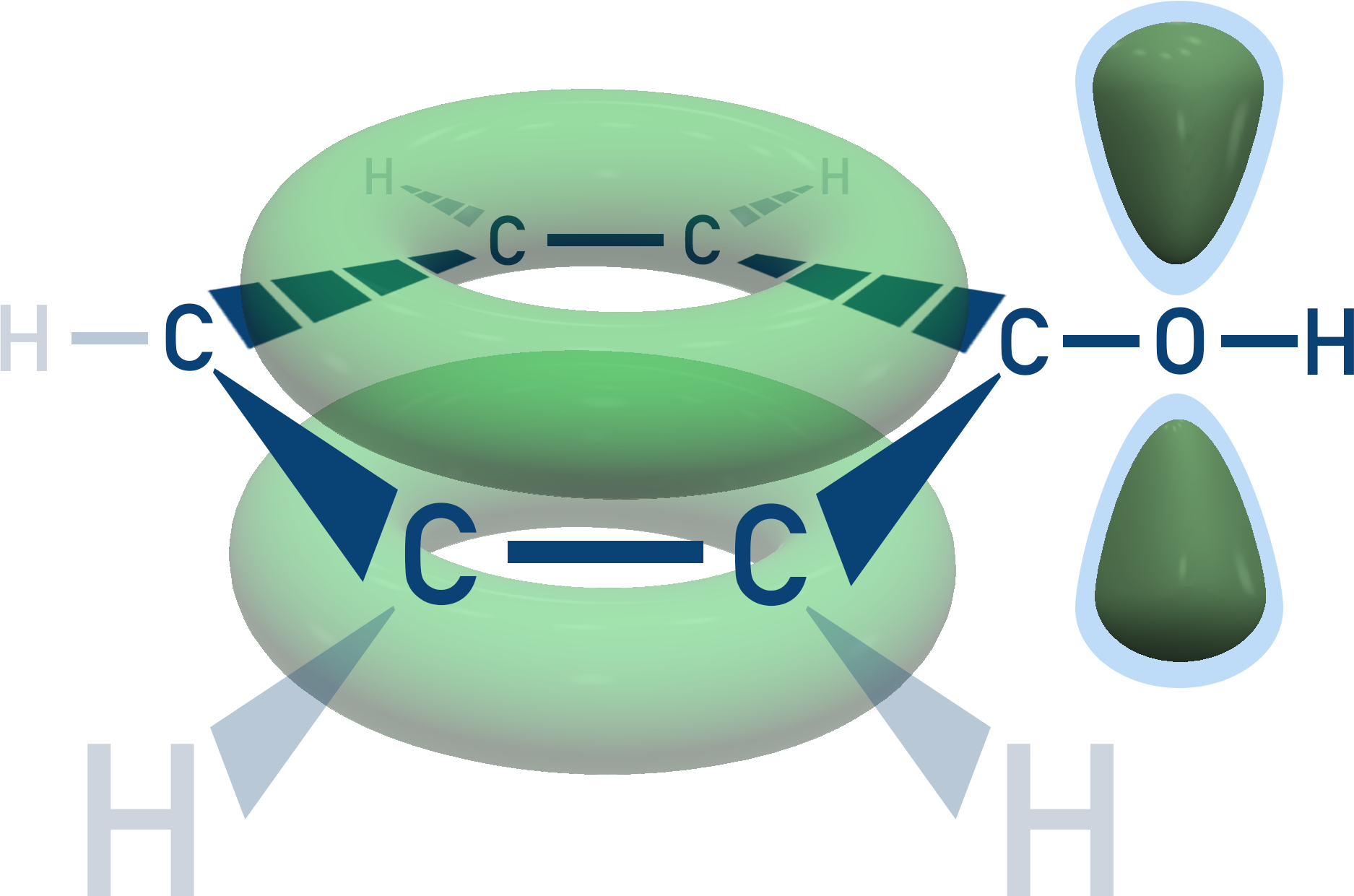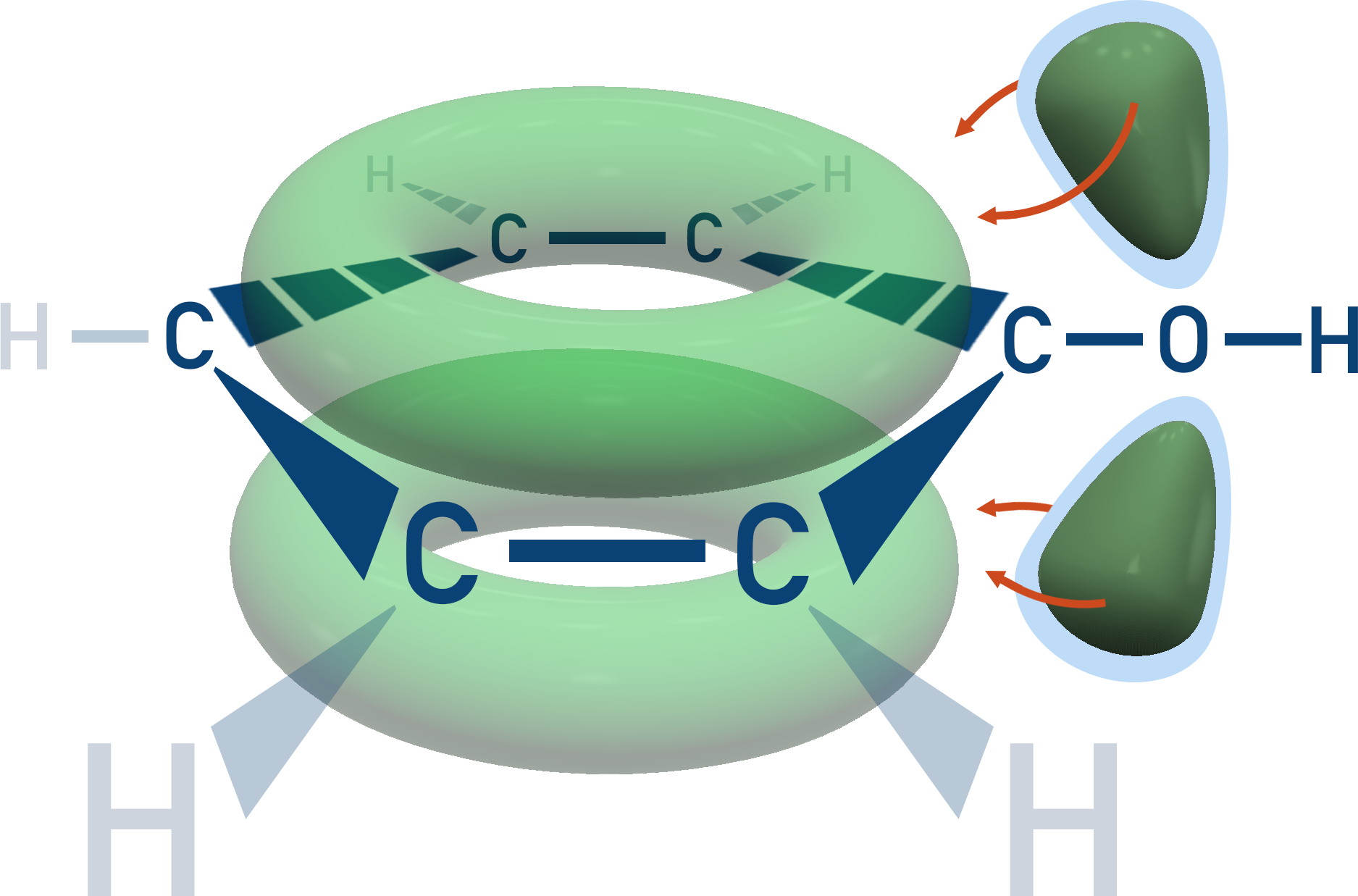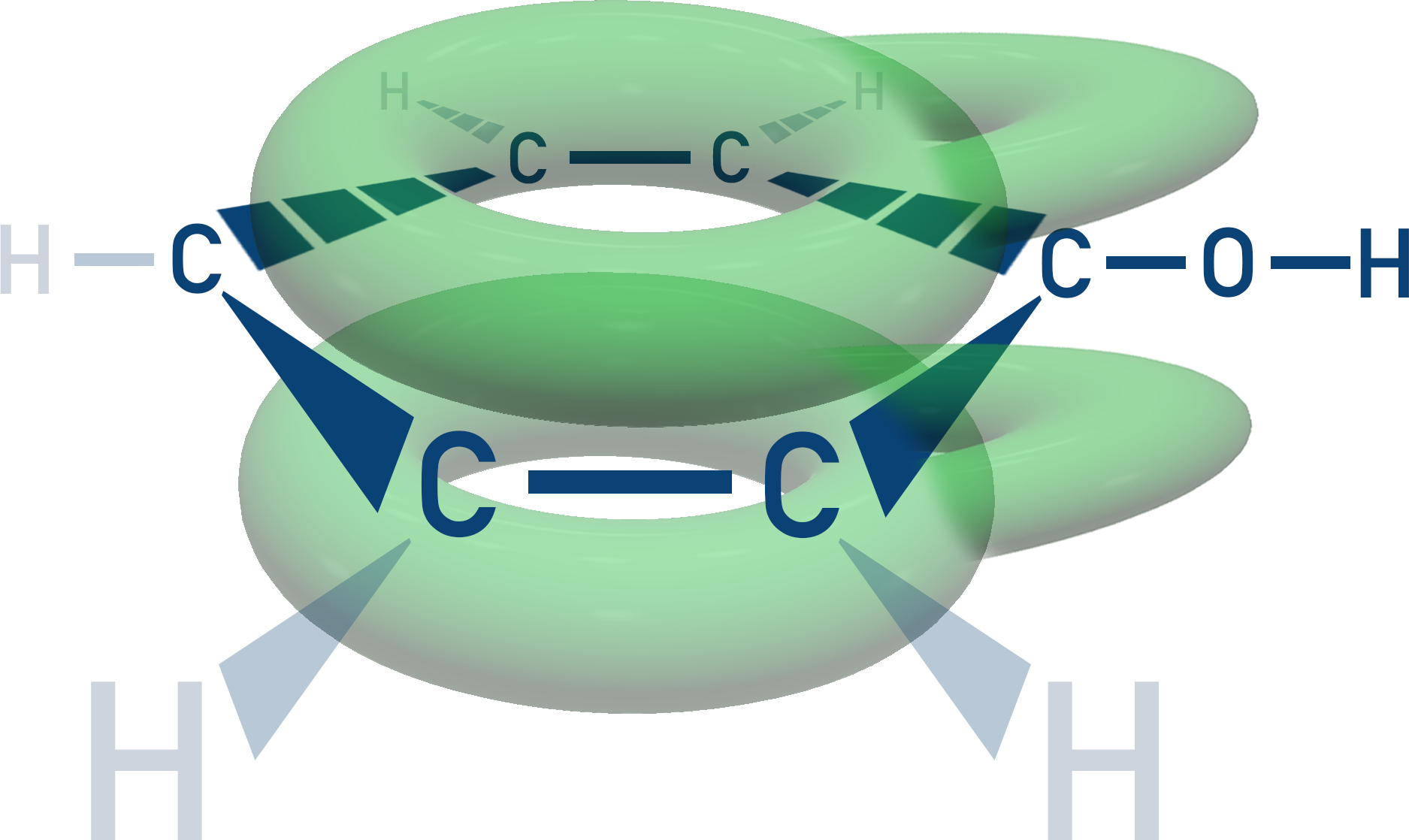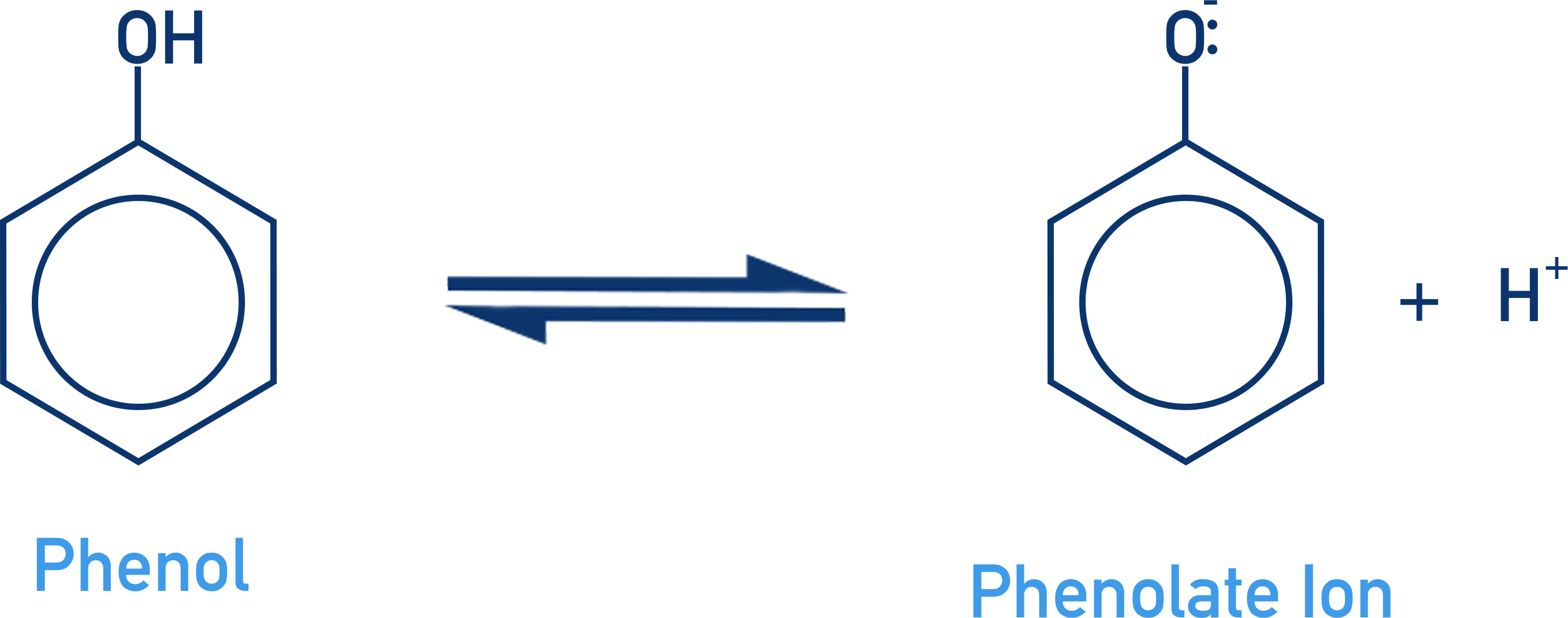Video Tutorial Phenol
Quick Notes Phenol
- Phenol is an organic molecule that has a benzene ring (phenyl) with a hydroxyl group (OH) attached.

- A lone pair of electrons on the oxygen atom merge with the pi-bonding system in the benzene ring.
- Phenol can act as a weak acid.
- The OH group can release a proton because the negative charge that forms on the oxygen atom can be spread through the pi-bonding system in benzene.
- Alcohols are not weak acids as a negative charge on the oxygen atom would be localised and this would mean the ion would be a very strong base and instantly re-bond to a H+ ion, reforming the alcohol.
Full Notes Phenol
A phenol molecule is made of a benzene ring with a hydroxyl (OH) group attached.

The oxygen atom in the hydroxyl group has lone pairs of electrons that interact with the pi-bonding system in the benzene ring.

This interaction gives phenol very different chemical properties compared to a standard benzene molecule, allowing it to act as a weak acid.
Phenol as a Weak Acid
In a phenol molecule, a lone pair of electrons on the oxygen atom in the hydroxyl group merge with the pi-bonding system of the benzene ring.

This creates a new system with ‘distorted’ electron density above and below the plane of the molecule. The new system allows phenol to behave as a weak acid.

To understand why phenol acts as a weak acid, it’s important to understand why ‘normal’ alcohols in organic chemistry do not act as weak acids.
Why does phenol behave as a weak acid but alcohols do not?
Organic acids donate or release hydrogen ions (H+). By doing this, they themselves become negatively charged. Lone charges on atoms are unstable.
Positive and negative ions are actually attracted to each other because the closer they get, the lower their energies and the more stable they become. Lone charges by themselves then are high energy and make the species with the charge unstable.

If the charge on a molecule can be spread out or ‘delocalised’, the molecule becomes more stable.
If an alcohol were to lose a hydrogen ion, the oxygen would become negatively charged, forming an 'alkoxide' ion.

The negative charge would have nowhere ‘to go’ in the molecule, and there is no way of spreading the charge out. This would make the molecular ion unstable, and forming it would require large amounts of energy. The alkoxide ion would also act as a very strong base, meaning it would instantly pick up another H+ ion, reforming the alcohol. This is why alcohols are not acidic and do not release H+ ions.
In phenol, however, if the OH group loses a H+ ion and a phenolate ion forms, the negative charge left on the oxygen atom can be ‘spread out’ through the pi-bonding system in the molecule.

This spreading out means the charge is not localised in one place, which makes the molecular ion far more stable and much easier to form. This also makes it harder for the oxygen to regain a H+ ion, giving the phenolate ion a low basicity (less likely to rebond to a H+ ion and form phenol again).

This is why phenol can behave as a weak acid.
We’ve launched our new site! 🎉
Course-specific notes with built-in search!
AP • A-Level (AQA • CIE • Edexcel • OCR) • IB • NCERT 11 + 12
over 750+ new pages and 3,500 images.
Visit the new homepage
